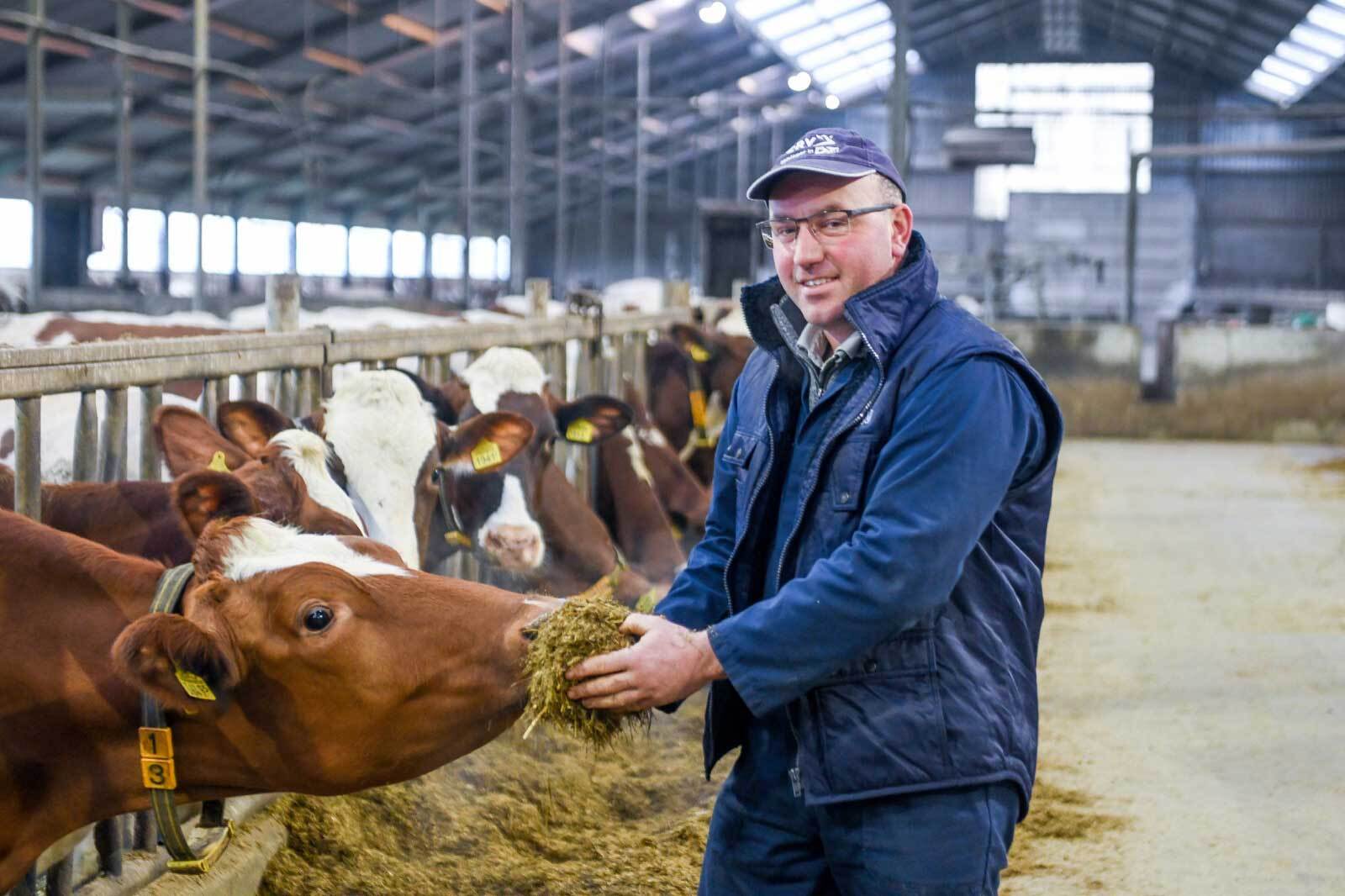“At our farm, the production of a kilo of fat and protein corrected milk costs on average 21 cents in feed. If we manage to save 10 percent in feed costs without compromising milk production, that will save us a lot of money.”
Using this simple calculation, Dutch dairy farmer Pierre Litjens outlines the economic importance of the efficient conversion of feed into milk. Along with his wife, Angela, and their three adult sons, he and four enthusiastic (part-time) employees operate a farm in Ewijk with 295 dairy cows and 185 young animals on 115 hectares of land. The cows produce a rolling annual average of 10,261 kg of milk with 4.42% fat and 3.78% protein. Achieving good feed efficiency is a main aim for Litjens in his farm management.
Feed costs doubled in ten years
Before Litjens became a full-time livestock farmer, he worked as a feed consultant. “As a result of that, at our own farm too, I have given conscious thought to the efficiency at which the herd utilizes feed for milk production. In 2012, I had already calculated the cost price of the roughage in the pit. I was shocked by the results,” he recalls. “And now we are ten years down the line and the costs of producing or purchasing feed have more or less doubled. Plus, the intensity of our farm has increased from 15,000 to 25,000 kg of milk per hectare. This means it is even more important that my cows convert every kilo of feed effectively into milk,” he explains.
Differences greater than expected
The livestock farmer believes there are several ways of improving feed efficiency on his farm. Breeding is one of those. The livestock farmers at the test farms where CRV monitors the feed intake of individual cows, see significant differences between cows. The animals with the lowest performance produce 1.2 kg of fat and protein-corrected milk from a kilogram of feed, whilst the best-performing cows produce 2 kg of fat and protein-corrected milk from that same kilogram of feed. “I expected that there would be differences between the cows, but the fact that the differences were so great was a real eye-opener for me,” says Litjens.
Roughage utilization is also higher
Another eye-opener was the insight that cows with a high feed efficiency are able to convert both roughages and feed concentrate into milk. “This, therefore, means that a higher feed efficiency contributes to better utilization of roughage,” he concludes. In recent years, Litjens has placed a greater emphasis on production in his breeding goal. “We only use bulls with at least +10% CRV Efficiency,” he explains. Because the breeding value of feed efficiency is one of the three building blocks for this index, based on this the livestock farmer also breeds directly for cows that convert feed into milk more efficiently.


